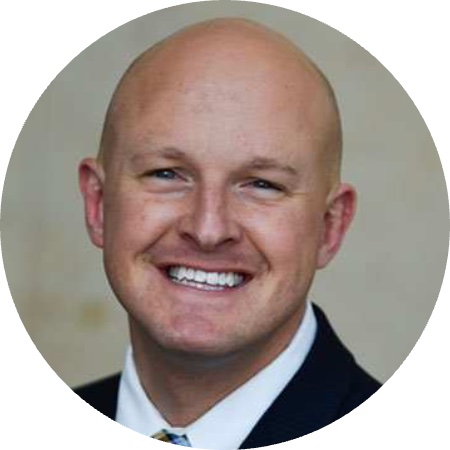‘Leaders need to rethink their listening strategy’: What 2024 has in store for workforces

Anyone who thought that the traditional workplace genie was going to go firmly back in its bottle in 2024 better think again. We’re only just getting started.
If there was a common theme for knowledge and desk-based workforces in 2023 it would undoubtedly have been the return-to-office tug of war. And while RTO mandates have had mixed success (cue numerous employee backlashes), generally, for those businesses that require it, employees have accepted (and some even welcome) that they need to be in the office, at least for part of the week. So the RTO battles should really be over in 2024 — hybrid has won the war for the bulk of companies, for now.
Instead, employers will likely shift their focus to how their teams achieve the best performance when they are physically together on site, as well as when they’re apart. And there is plenty to still be worked out.
There’s yet to be a new modern workplace standard when it comes to success for hybrid work. “There’s still a lot of uncertainty. I don’t think anybody has said ‘we’ve cracked it’,” said Aaron de Smet, senior partner at management consultancy McKinsey, where he works with clients on organizational agility and growth and is an expert on culture change and leadership development. “A lot of them would say: ‘we’ve made some progress, and we’ve learned some things, we have had some successes.’ But I don’t think very many would say we’ve got it figured out.”
But that’s to be expected, stressed de Smet. When the coronavirus pandemic turned the working world on its head, it also shook the foundation of working models that have been in place for more than a century. They were due a shakeup. And if the pandemic hadn’t triggered the change, generative artificial intelligence would have.
But such radical resets take time. They can’t be rushed.
What’s becoming clearer, to more business leaders, is that returning to the office isn’t solving all performance problems. “The notion: ‘we just can’t let everybody do whatever they want’ – that is true. We can’t just let everybody be remote all the time. But the idea that therefore we go back to a mandated five days in the office, no, that’s not working,” said de Smet. “People have tried it and they’re saying the pros and cons are making it not much better than just letting people do what they want.”
But at the heart of it all is engaging your people. The focus this year will be on how to help those teams thrive and be productive — and that’s going to involve a lot more than simply getting them into the office, stressed de Smet.
As we hurtled into the 2023 festive holiday season, there was a sense of “collective frustration” in the air not just among executive business leaders, but their employees, middle managers stuck in the middle trying to broker both sides and HR execs feeling pressure to acquire talent without being able to be flexible on remote work, according to Cali Yost, CEO and founder of workplace consultancy Flex+ Strategy Group, which counts UBS, ConEdison and accounting firm BDO USA among its clients.
Frustration over performance and quality levels, over staff engagement, and talent retention has been palpable among business leaders, stressed Yost. “These are real issues that they believed would be solved by getting people back into the office,” she said. “But presence [on site] will not automatically result in the outcomes they think need to be achieved,” she added.
The next level of change
If these genuine performance concerns are going to be solved, attention needs to be devoted to really examining which work generates better outcomes when achieved collectively in person, and what is more efficiently achieved remotely.
Some of Yost’s clients are spending time with this issue, but are finding that the structure of it might vary depending on seasonal fluctuations of their businesses. Once that is established, they then ask: “how do we manage that with intention?,” she said, so that people don’t just end up coming into the office to do the same work they’d have done remotely. “What does that look like? And what are the systems you have to have in place to manage this flexible way of working to achieve those performance objectives that have been determined to be important,” she added.
Ensuring there is purpose in coming into the office, needs to be table stakes in 2024. “You always want to think about what’s in it for them, like what is the employee value proposition?,” said Nilesh Thakker, global head of talent at management consultancy Zinnov, which has an extensive Fortune 500 roster of clients.
Honing in on what that purpose is, and then reinforcing it by communicating clearly to employees why that’s critical for the business goals – will be a more effective alternative to just telling people what days they need to be in, stressed Thakker, who consults with chief experience officers at global Fortune 100 companies as well as startups across verticals including retail, storage and healthcare.
“We strongly encourage companies to create a sense of purpose,” said Thakker. “Why is connectedness important for their growth and development? Set up some community meetups or innovation hackathons where people are able to work together and get that excitement and enjoy the fun aspects of it.”
Being transparent and communicating why being in-person also benefits the company, is no bad thing. “Most employees want to contribute to the company’s success. So feed into that and say why coming to work can be important for company’s growth and development,” added Thakker.
Employers and employees heading for a “relationship reset”
Many organizations are “radically retooling” the way they do business, leaving employees, including managers, stressed and disconnected, according to Gallup’s latest leadership report, published in Dec. 2023.
More than half (56%) of employees polled responded that they visibly noticed that customer expectations changed during the pandemic — they wanted more things, delivered faster, and accessible digitally. “We became much more customer-centric during that time, and that puts pressure on workers,” said Ben Wigert, psychologist and director of research and strategy and workplace management, at Gallup. Consider the dicy economic headwinds businesses faced in 2023, the waves of layoffs that created internal restructuring and employee displacement, and it becomes more obvious why organizations need to “retool.”
The dust had begun to settle on that extremely rocky period as we closed out 2023, with organizations and their employees entering a more stabilized state — with little movement in companies across the board, according to Gallup’s location data, Wigert stressed. And 8 in 10 CHROs said there are no plans for change, per a different Gallup report.
“We’ll see more cautious adjustments going forward. Companies will continue to recalibrate and retool both for the sake of their business in their marketplace and for the sake of their employees,” said Wigert. “What I hope they do is move from policy to actual action of improving how they reconnect with their employees, and how they help teams collaborate and build culture more effectively going forward. To me, that’s the really critical thing.”
Employees’ sense of mission and purpose has eroded, to worrying levels, per Gallup’s report. Part of that loss of trust and engagement has come from that unsettling period of layoffs, added Wigert. The knock-on effects, including axed budgets, team restructures and additional job responsibilities, has also caused stress levels to spike.
Business leaders need to rebuild trust with their employees in 2024, if they’re to cultivate happy, driven, productive workforces who can move the needle on business outcomes.
And currently, there is some real damage to repair. Due largely to layoffs in 2023, 64% of employees in Gallup’s survey said they were given extra job responsibilities, 51% said their teams were restructured and 42% said their company had budget cuts, leaving them with less resources to complete work. And that’s leading to a lot of stress and disengagement.
“They’re [business leaders are] very aware of the need to listen, they’re not very practised at the art of listening. Going forward organizations and leaders need to rethink their listening strategy,” added Wigert. And that goes from executive leaders through to managers of teams executing the work, he added.
In many ways, 2023 has been an exhaustive year of change. Businesses have struggled with growth slumps, layoffs, and other post-pandemic remnants that continue to ricochet across organizations. The arrival of generative AI has only sped up the rate of change and added more confusion to its implementation into workflows.
More change in 2024 is inevitable. And companies need to treat it as an opportunity, and develop a form of “nimble resilience,” said Mindi Cox, chief people officer at OC Tanner, an employee recognition and employee culture platform. “We’ve all been through a whole lot of change and everybody’s so sick of talking about it. But it’s a reality that we’ve got to deal with going forward. So what is the approach to change that is going to invite people to come along and maybe have a different mindset about what that looks like?,” she said.
One thing is clear, employees — the heart and engine of any organization — are done putting their personal health at risk for their jobs. “It’s not about hanging on by your fingernails anymore. Nobody wants to hear that message [of] just grip it a little tighter, you know, it’ll be over soon,” added Cox.
OC Tanner recently released its 2024 Global Culture Report, a year-long, international study on the current status of workplace culture with findings based on data gathered from over 42,000 employees and leaders in 27 countries around the world. The findings were conclusive: employees want to feel their organization and leaders have their best interest top of mind while having transparent communication and a voice in the change process.
“I think a lot of labor relations issues in the world boil down to is the organization sharing the outcomes of the work being done? If it [the work] leads to profit — are we sharing profit? If it leads to better products in the world, are we sharing the glory of that — giving respect and attribution to the work to those who actually do the work? It’s that whole mindset around sharing that is really important. Have I given you enough information so that you [the employee] can be a partner in this decision and this change.”
Because ultimately, most employees want to be engaged, and to feel motivated. And for that they need to feel valued. “Employees are really raising their hand and saying, ‘I’m in! But you’ve got to give me enough information so that I can help make those decisions, instead of just being told — this is the plan and you need to execute it. I want to understand.’ And I think that’s hugely encouraging because that’s saying I want to be more engaged,” added Cox.



